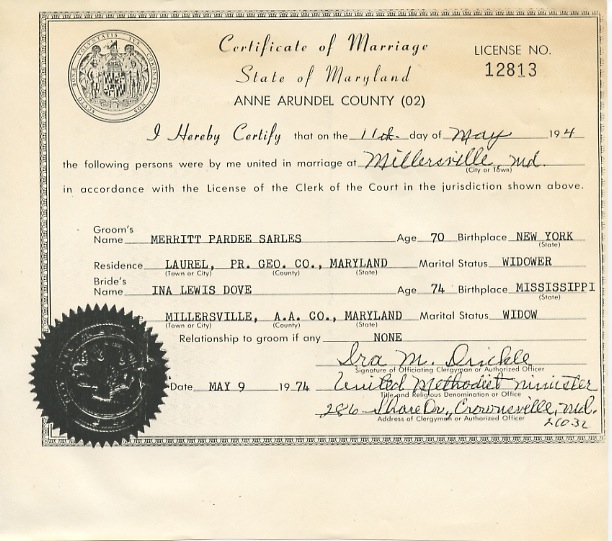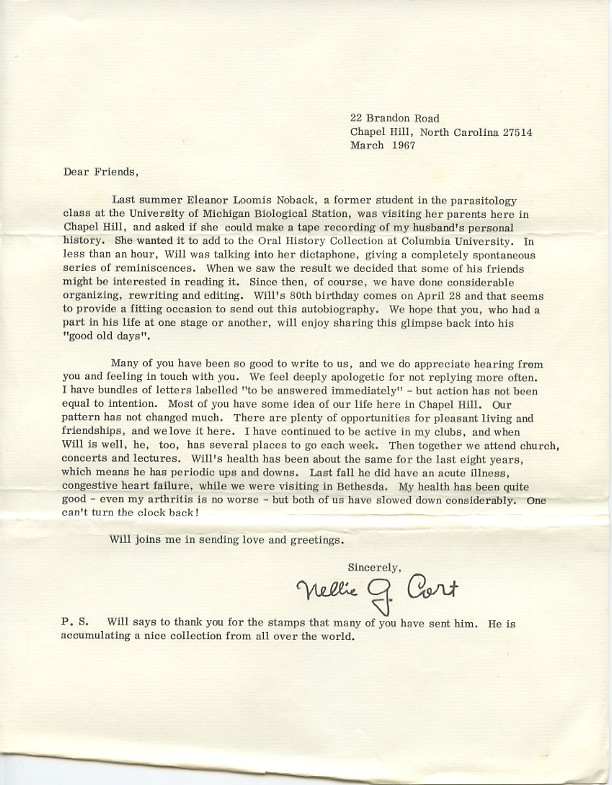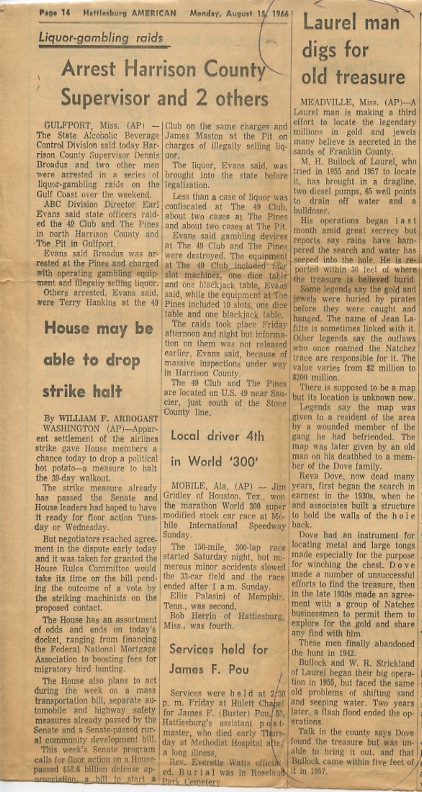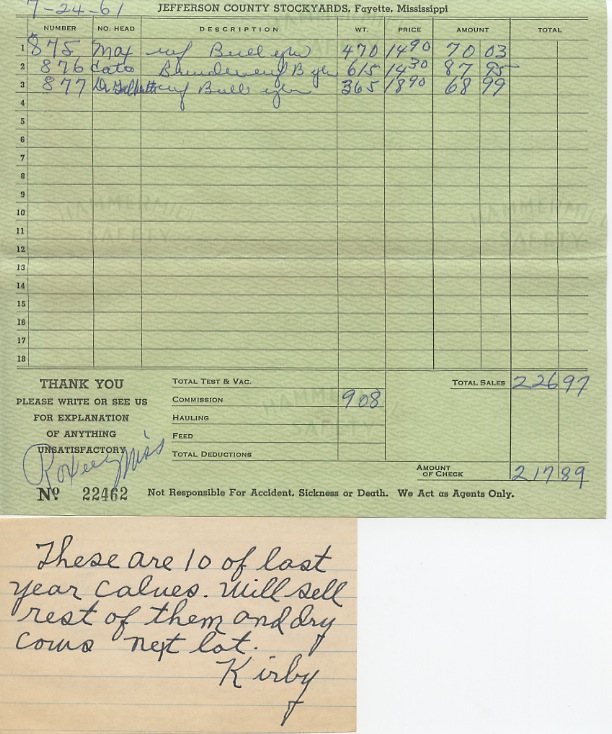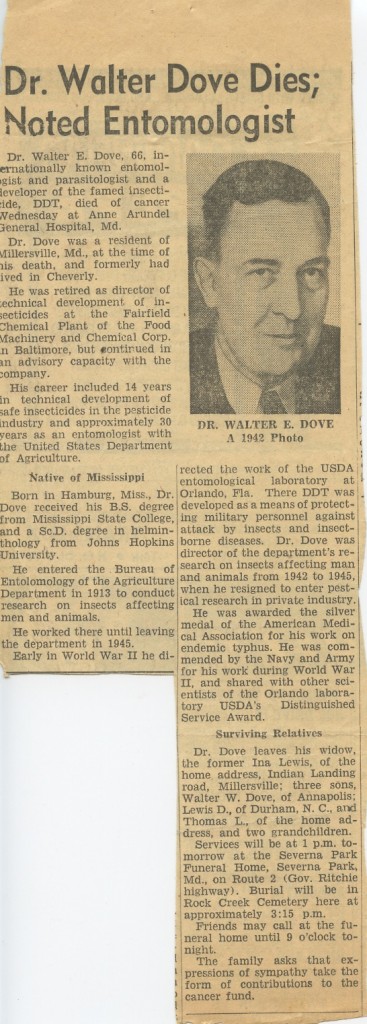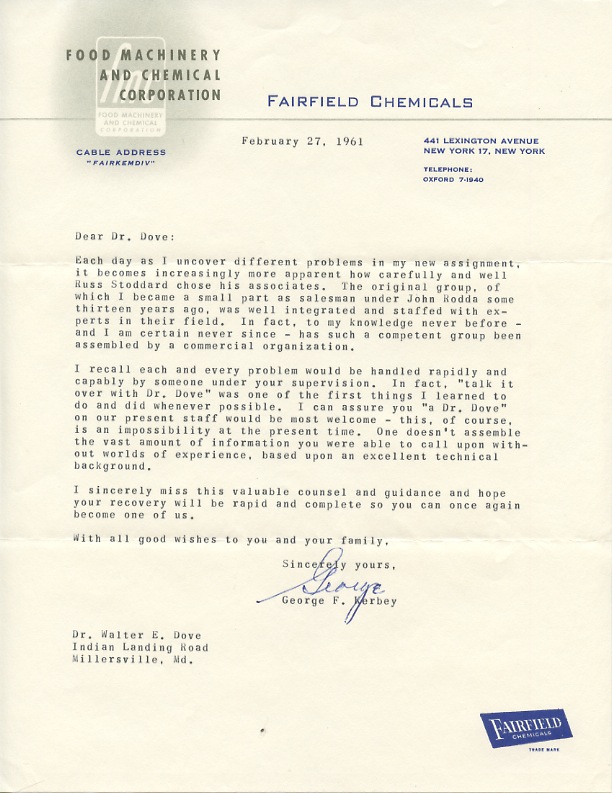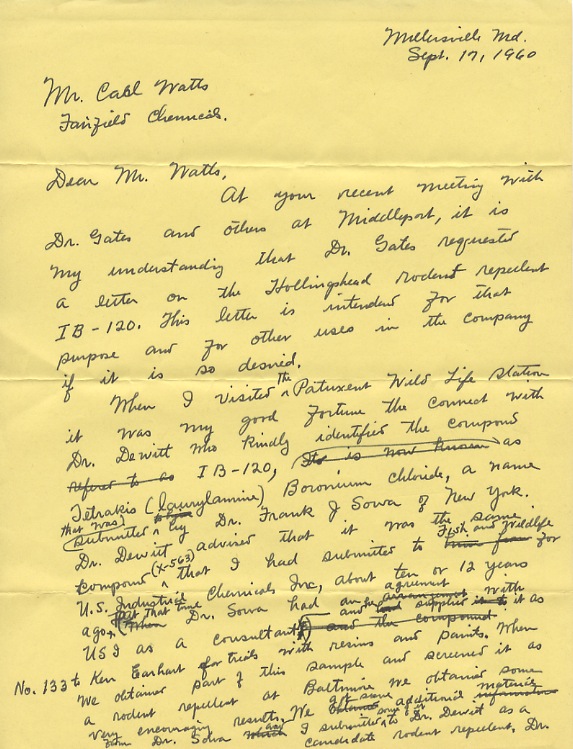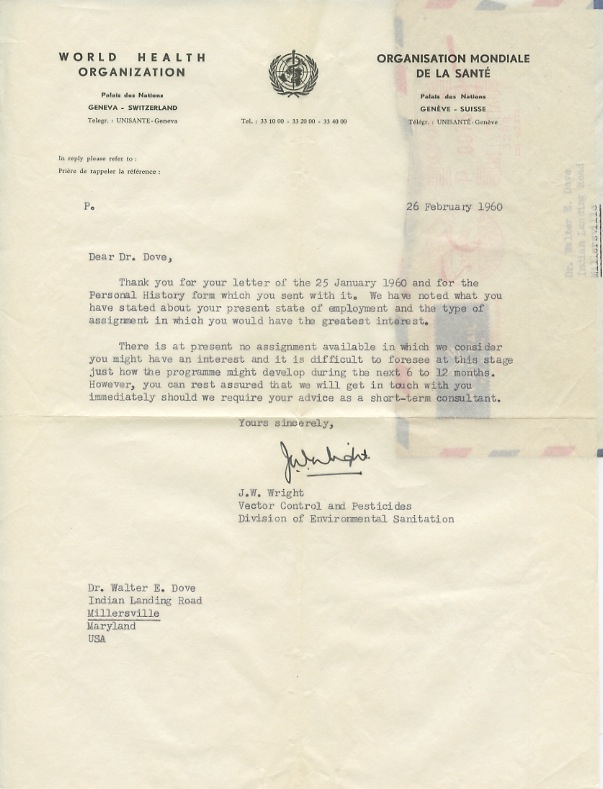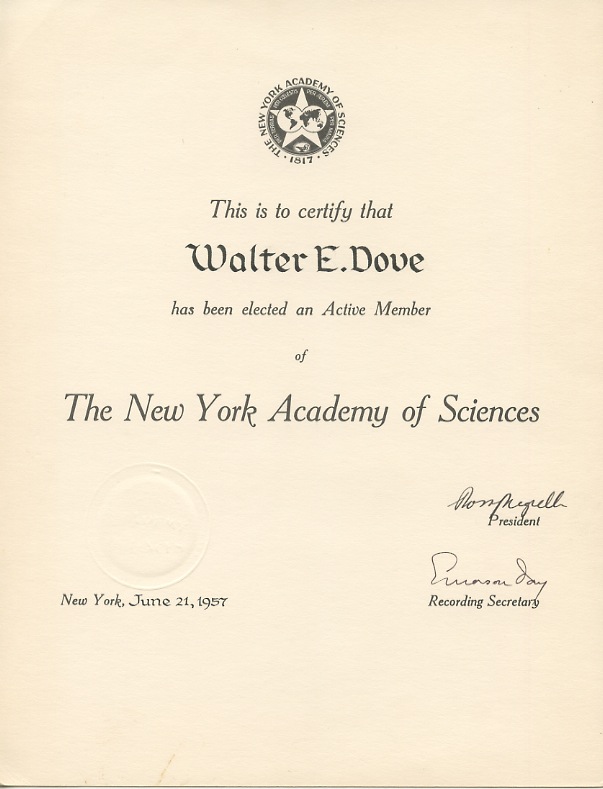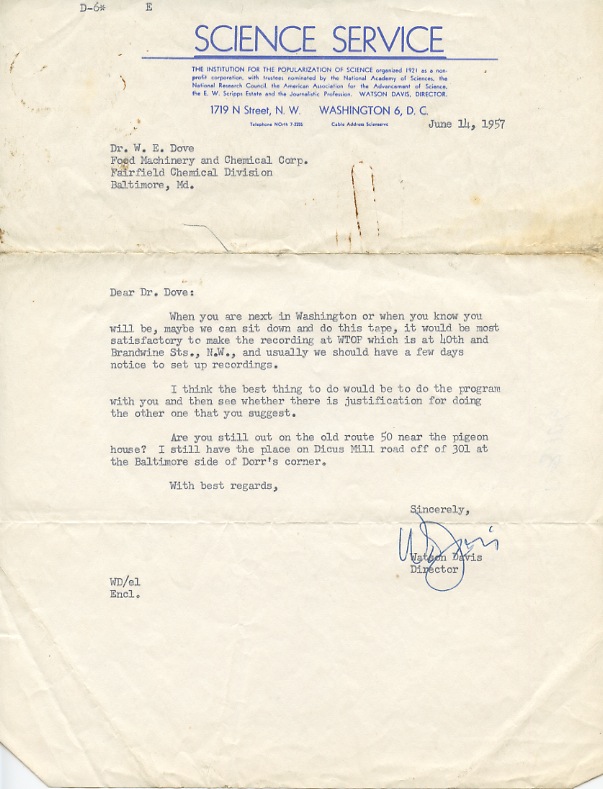Ina married Merritt Sarles, a former colleague of Walter’s. Merritt’s wife had died several years earlier. I remember attending this wedding. During my senior year of high school in 1986, I lived at their house in Millersville. They seemed happy together.
Monthly Archives: September 2013
March 1967
This cover letter accompanies an 8-page transcript titled “Autobiography of William W. Cort,” which covers one of Walter’s colleagues’ careers. Cort was at Hopkins for many years, so if there isn’t already a copy of this document in the University’s archives, there will be once I send these letters there.
August 15, 1966
This news story from the Hattiesburg American on Monday, August 15, 1966, Page 14, provides a nice summary of what was really going on when Walter and his brother Revah were digging a “well” on the Mississippi property in 1932. It wasn’t a well. Revah believed there was buried treasure on the family farm, and he had enlisted Walter’s aid to help dig for it. I didn’t explain this when I posted those letters because I wanted to wait until we got to this newspaper article.
If you do an internet search for “Franklin County Gold Hole,” you’ll get lots of wild speculation about what’s buried on my family’s land. Of course this is absurd, but that hasn’t stopped all manner of delusional folks from digging there, with or without permission.
In case any erstwhile treasure-seekers have landed on this page, I’ll reiterate what we’ve been telling these people for the past forty years: there’s no treasure buried there, and there never was. Jean Lafitte never passed anywhere nearby, nor did outlaws choose a random spot deep in the woods with no major landmarks to build some kind of robber’s 401(k) plan. The current generation of landowners is also disinclined to let anyone make the artificial lake on the property any bigger, so keep out.
July 24, 1961
These receipts are part of Ina’s effort to sell off the cattle from the Dove family farm in Mississippi, which she and Walter had inherited. Ina later gave the land to her three sons, who finished switching the property from cattle ranching and mixed farming to tree farming for lumber and paper pulp. It remains a sustainable tree farm; proceeds from it have helped put three generations of Doves through college.
March 22, 1961
Walter died on March 22, 1961. Here’s his obituary from the Washington Post. The archive also has copies of obituaries from several trade and research publications.
Here’s a more personal description of the events leading up to Walter’s death, from his youngest son (and my father), Tom:
My Dad died of respiratory cancer on March 22, 1961 at Anne Arundel General Hospital in Annapolis, Maryland. He was 66 years old. The years of cigar smoking were the cause.
Mother (Ina) and I were there. He had gone into a coma a day or so earlier and I came back from college. I remember that I had not taken time to change out of my Air Force ROTC uniform.
He had first shown signs of not being well about 1957, when they took me with them to Europe for a month. He was delivering a paper at a conference in Hamburg and meeting with Dr. Goodwin-Bailey in England, who was working in the same field as my Dad. They were old friends.
February 27, 1961
Letterhead from the Food Machinery and Chemical Corporation, Fairfield Chemicals Division.
At this point, Walter was still working for FMC in a consulting capacity, but he’d been out for awhile on sick leave after a cancer diagnosis. Remember those cigars he’s always smoking in photos?
September 17, 1960
Millersville, Md.
September 17, 1960
Mr. Carl Watts
Fairfield Chemical
Dear Mr. Watts,
At your recent meeting with Dr. Gates and others at Middleport, it is my understanding that Dr. Gates requested a letter on the Hollingshead rodent repellent IB-120. This letter is intended for that purpose and for other uses in the company if it is so desired.
When I visited the Patuxent Wild Life Station it was my good fortune to connect with Dr. Dewitt who kindly identified the compound IB-120 as Tetrakis (laurylamine) Boronium Chloride, a name that was submitted by Dr. Frank J. Sowa of New York. Dr. Dewitt advised that it was the same comound (X-563) that I had submitted to Fish and Wildlife for U.S. Industrial Chemicals Inc., about ten or 12 years ago. At that time Dr. Sowa had an agreement with USI as a consultant and he supplied it as No. 133 to Ken Earhart for trials with resins and paints. When we obtained part of this sample and screened it as a rodent repellent at Baltimore we obtained some very encouraging results. We got some additional material from Dr. Sowa and I submitted some of it to Dr. Dewitt as a candidate rodent repellent. Dr. Dewitt reported K/values of 86%, 91% and 92% from his tests. He encouraged us to send additional related materials, because he had not previously screened any Boronium compounds, and this one seemed to come from a most promising group.
That’s the end of the letter. This appears to be a draft Walter was working on. I believe effective rodent repellents are still an active problem in pest control research, and I have no idea what became of IB-120. There are a couple of other items in the archive related to Walter’s work at USI and Fairfield Chemical, but I’m not going to post the ones on company letterhead labeled “Inter-Office Correspondence.” It seems unlikely that the company’s successors would really care about keeping this 50-year-old information secret, but I’d rather not test that. Those memos – and the rest of these letters – will go to Johns Hopkins University’s library for storage with Walter’s other work papers once I’ve finished this blog.
February 26, 1960
Walter apparently applied for work with the World Health Organization. At this point, the WHO was five years into the doomed Global Malaria Eradication Programme. The program relied primarily on DDT, a compound on which Walter was probably the world’s foremost expert at that time. It seems the WHO wasn’t interested in what he might have to say about it.
June 21, 1957
June 14, 1957
As you can see, the letters are really thinning out now. I’m just picking the remaining items that I think will be of interest to whoever is still reading this blog. This letter from the Science Service talks about a radio interview that they wanted to tape with Walter. A follow-up letter indicates they actually did this, for the “Adventures in Science” radio series. I don’t know what became of the tapes after the show aired.

